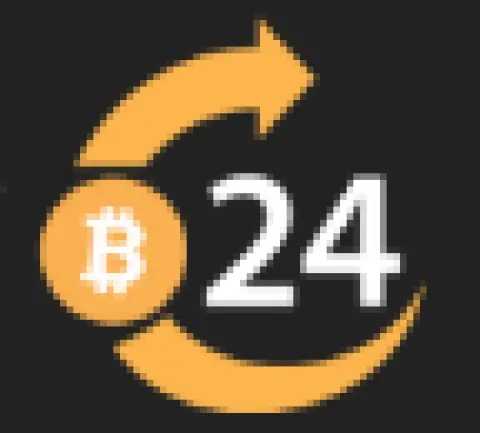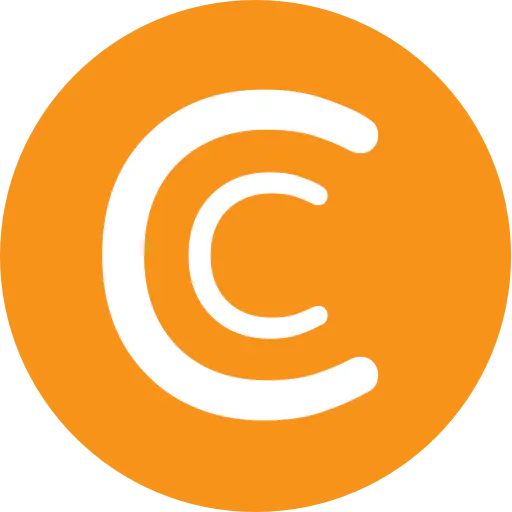Table of Contents:
Introduction
In today's digital age, ensuring the authenticity of information is more crucial than ever. With the rise of digital transactions and online interactions, the need for a reliable verification system has become paramount. This is where blockchain verification comes into play. By leveraging the unique properties of blockchain technology, we can create a tamper-proof, efficient, and trustworthy system for verifying credentials and identities. This article will explore the importance of blockchain verification, its benefits for both organizations and individuals, and how it is revolutionizing various industries.
What is Blockchain Verification?
Blockchain verification is a process that uses blockchain technology to confirm the authenticity of data. A blockchain is a decentralized ledger that records transactions across many computers. This ensures that the recorded data cannot be altered retroactively without altering all subsequent blocks, which requires consensus from the network.
The Best Mining Providers at a Glance
» Infinity HashFrom our perspective, currently the best mining provider on the market. With the community concept, you participate in a mining pool completely managed by professionals. A portion of the earnings are used for expansion and maintenance. We've never seen this solved as cleanly anywhere else.
» Hashing24A well-known and established cloud hosting company. With a good entry point and in a good market phase, a good ROI can also be generated with some patience. Unfortunately, we see the durations as a major drawback.
In simpler terms, blockchain verification involves adding a digital fingerprint, or hash, to each piece of data. This hash is unique and changes if the data is tampered with. By comparing the current hash with the original, one can verify the data's integrity.
Key components of blockchain verification include:
- Decentralization: No single entity controls the blockchain, making it resistant to tampering.
- Transparency: All transactions are visible to participants, ensuring accountability.
- Immutability: Once data is recorded, it cannot be changed without consensus, ensuring its authenticity.
These features make blockchain verification a powerful tool for ensuring the authenticity of digital information.
Benefits of Blockchain Verification for Organizations
Organizations across various industries can greatly benefit from blockchain verification. Here are some key advantages:
- Improved Trust: Blockchain's transparency and immutability foster trust among stakeholders. Everyone can verify the authenticity of data independently.
- Reduced Fraud: The tamper-proof nature of blockchain makes it difficult for malicious actors to alter or forge information, significantly reducing the risk of fraud.
- Streamlined Processes: Blockchain verification automates and simplifies the verification process, reducing the need for manual checks and third-party intermediaries.
- Lower Costs: By eliminating intermediaries and reducing the time spent on verification, organizations can save on operational costs.
For example, in the construction industry, a training organization can issue a certificate on the blockchain. A construction company can then verify this certificate instantly, ensuring that the worker has the necessary qualifications without delays or additional costs.
Benefits of Blockchain Verification for Individuals
Individuals also stand to gain significantly from blockchain verification. Here are some of the key benefits:
- Control Over Personal Information: Blockchain allows individuals to manage and control their own data. They can decide who has access to their information and for how long.
- Enhanced Privacy: With blockchain, personal information is not stored on a central server, reducing the risk of data breaches and unauthorized access.
- Credential Portability: Individuals can carry their verified credentials with them, making it easier to prove their qualifications and identity across different platforms and services.
For instance, in the field of telemedicine, a patient can use blockchain verification to securely share their medical history with a new doctor. This ensures that the doctor has accurate information while the patient retains control over their sensitive data.
Key Tools for Blockchain Verification
Several key tools are essential for effective blockchain verification. These tools help ensure that the verification process is secure, efficient, and user-friendly:
- Verifiable Credentials: These are digital certificates that can be issued, stored, and verified using blockchain technology. They provide a tamper-proof way to prove qualifications, identities, and other important information.
- Decentralized Identifiers (DIDs): DIDs are unique identifiers that are created and managed on a blockchain. They allow individuals and organizations to have self-sovereign identities, meaning they control their own digital identity without relying on a central authority.
- Digital Wallets: Digital wallets are applications that store and manage verifiable credentials and DIDs. They enable users to securely share their credentials with others and verify the authenticity of received credentials.
For example, Dock's blockchain system uses DIDs to ensure privacy and security. It does not store verifiable credentials on the blockchain, which helps protect personal information. Verification on Dock's blockchain is instant, typically taking only a few seconds.
How Blockchain Verification Works in Different Industries
Blockchain verification is transforming various industries by providing a secure and efficient way to verify information. Here’s how it works in some key sectors:
Education: Educational institutions can issue diplomas and certificates on the blockchain. This allows employers to instantly verify the credentials of job applicants, reducing the risk of hiring unqualified candidates.
Healthcare: In telemedicine, doctors can use blockchain to verify a patient's medical history and credentials. This ensures accurate diagnosis and treatment while maintaining patient privacy.
Workforce: Employers can verify the qualifications and work history of potential employees. This helps in hiring the right talent and reduces the time spent on background checks.
Construction: Training organizations can issue certifications for skilled workers on the blockchain. Construction companies can then verify these certifications instantly, ensuring compliance with safety and quality standards.
For example, a training organization might issue a certificate to a worker on the blockchain. When the worker applies for a job, the construction company can verify the certificate in seconds, ensuring the worker's qualifications are legitimate.
Common Use Cases of Blockchain Verification
Blockchain verification has a wide range of applications across different fields. Here are some common use cases:
- Credential Verification in Education: Schools and universities can issue diplomas and certificates on the blockchain. Employers can then verify these credentials instantly, ensuring they are genuine.
- Identity Verification in Telemedicine: Patients can share their verified medical history with healthcare providers. This ensures accurate and timely treatment while maintaining patient privacy.
- Proof of Funds in Finance: Financial institutions can use blockchain to verify the authenticity of funds. This helps in preventing fraud and ensuring compliance with regulations.
- Supply Chain Transparency: Companies can track products from production to delivery on the blockchain. This ensures that products are authentic and have not been tampered with during transit.
For example, in the finance sector, a bank can use blockchain verification to confirm that a customer has the necessary funds for a transaction. This process is quick and reduces the risk of fraud, ensuring a secure financial environment.
Challenges in Traditional Verification Methods
Traditional verification methods come with several challenges that make them less efficient and secure compared to blockchain verification. Here are some of the main issues:
- Time-Consuming: Verifying credentials and identities often involves multiple steps and intermediaries, leading to delays.
- Costly: The involvement of third parties and manual processes increases the overall cost of verification.
- Error-Prone: Manual verification is susceptible to human errors, which can lead to incorrect or incomplete verification.
- Vulnerable to Fraud: Traditional methods can be manipulated, making it easier for fraudulent activities to occur.
- Privacy Concerns: Centralized databases storing personal information are prime targets for data breaches, risking individuals' privacy.
For instance, in the education sector, verifying a diploma traditionally requires contacting the issuing institution, which can take days or even weeks. This process is not only slow but also prone to errors and fraud, as fake diplomas can be created and presented.
How Blockchain Verification Solves These Challenges
Blockchain verification addresses the challenges of traditional verification methods by leveraging the unique properties of blockchain technology. Here’s how it solves these issues:
- Instant Verification: Blockchain allows for real-time verification of credentials and identities. This eliminates delays and speeds up processes significantly.
- Lower Costs: By removing intermediaries and automating verification, blockchain reduces the overall cost associated with the process.
- Fraud-Proof: The immutable nature of blockchain makes it nearly impossible to alter or forge information, drastically reducing the risk of fraud.
- Reduced Errors: Automated verification minimizes human errors, ensuring more accurate and reliable results.
- Enhanced Privacy: Blockchain's decentralized nature means that personal information is not stored in a single, vulnerable location. Individuals have control over their data, reducing the risk of breaches.
For example, in the healthcare industry, blockchain verification can be used to instantly verify a patient's medical history. This ensures that doctors have accurate information, reduces the risk of errors, and protects patient privacy by not storing sensitive data in a central database.
Dock's System and How it Ensures Privacy and Tamper-Resistance
Dock's system is a prime example of how blockchain verification can ensure both privacy and tamper-resistance. Here’s how it achieves these goals:
- Decentralized Identifiers (DIDs): Dock uses DIDs to create user-controlled digital identities. These identifiers are not tied to a central authority, giving individuals full control over their identity data.
- Non-Custodial Wallets: Both individuals and organizations can use non-custodial wallets to manage their credentials. This means that users hold their own private keys, ensuring that only they can access and share their information.
- Privacy Measures: Dock’s system avoids storing verifiable credentials directly on the blockchain. Instead, it uses cryptographic proofs to verify credentials, protecting personal information from exposure.
- Tamper-Resistance: The blockchain’s hash functions ensure that once data is recorded, it cannot be altered without consensus from the network. This makes the system highly resistant to tampering.
For example, a training organization can issue a certificate to a worker using Dock's system. The certificate is linked to the worker's DID and stored in their non-custodial wallet. When the worker applies for a job, the employer can verify the certificate instantly, knowing it is authentic and tamper-proof.
Conclusion
In conclusion, blockchain verification offers a robust solution to the challenges faced by traditional verification methods. Its ability to provide instant, cost-effective, and fraud-proof verification makes it an invaluable tool for both organizations and individuals. By leveraging key tools like verifiable credentials, decentralized identifiers, and digital wallets, blockchain ensures that data remains secure and tamper-resistant.
Industries such as education, healthcare, workforce, and construction are already seeing the benefits of blockchain verification. From credential verification to identity authentication, the applications are vast and impactful. Dock's system exemplifies how blockchain can be used to enhance privacy and security, providing a reliable way to manage and verify information.
As digital interactions continue to grow, the importance of ensuring authenticity through blockchain verification will only increase. Embracing this technology can lead to more efficient processes, reduced fraud, and greater trust in digital transactions.
FAQ about Blockchain Verification
What is blockchain verification?
Blockchain verification is a process that uses blockchain technology to confirm the authenticity of data. It involves adding a digital fingerprint, or hash, to each piece of data, ensuring its integrity by comparing the current hash with the original.
What are the benefits of blockchain verification for organizations?
Organizations benefit through improved trust, reduced fraud, streamlined processes, and lower operational costs. Blockchain's transparency and immutability foster trust, while its automated verification reduces the need for third-party intermediaries and manual checks.
How does blockchain verification secure personal information for individuals?
Blockchain allows individuals to manage and control their own data, ensuring privacy by not storing personal information on a central server. This reduces the risk of data breaches and unauthorized access.
What key tools are essential for blockchain verification?
Key tools include Verifiable Credentials, Decentralized Identifiers (DIDs), and digital wallets. These tools provide tamper-proof ways to prove qualifications and identities, ensuring secure and efficient verification processes.
How does Dock's system ensure privacy and tamper-resistance?
Dock's system uses Decentralized Identifiers (DIDs) and non-custodial wallets to create user-controlled digital identities. It avoids storing verifiable credentials on the blockchain, using cryptographic proofs instead, which protects personal information and ensures tamper-resistance.










